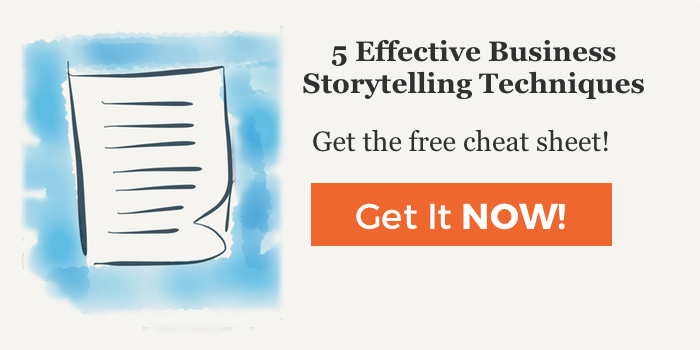How to Tell Your Brand Story: Lessons from Swashbuckling Pirates
Eric Hinson
Running a business is a bold adventure.
It’s like setting sail on the high seas. Like a ship, businesses have a lot of moving parts, need skilled labor to run well, and are always on the lookout for other pirates competitors.
All Captains (founders, managers, etc.) desire to keep a tight ship, outrun or properly engage their foes, and keep their destination clearly ahead on the horizon. With a good set of core values and an accurate map, it should be smooth sailing.
Unless… well, your customers just don’t understand what it is you do.
The ability to communicate a message simply, clearly, and compellingly is a commodity among innovators. They may have all the newest marketing toys, but (oftentimes) they just aren’t sure how to tell a good story.
Do you ever feel like you’re in the same boat?
If you’ve ever struggled to communicate your company’s value or seem to fall short in your marketing materials, this post will move you in the right direction.
A Story is Being Told

If a business isn’t intentionally spreading a crafted message, that business is either currently having or will have problems. The reason we know this is that a story is always being told—even if it’s not the one you want to tell.
Your company is already telling a brand story, too.
Through the website, your marketing, even your customer service. The best-case scenario is that it’s not the one you want to be told. The worst case is that the story isn’t a good one. It’s not clear and people (who may have purchased) just don’t get what you do.
For each client you win, there could be multiple lost deals on account of the lack of clarity in your offer.
Your Job:
- Cast a vision of how the world could be (for your ideal buyers) just by using your product.
- Better explain your brand (through storytelling). Express those benefits to customers more clearly than your competition does.
- Simplify that message until it hurts and draws in everyone who could be a perfect fit for your organization.
You’ve heard the term “brand storytelling” and the facts surrounding it, so much so that by now you may just gloss over it.
So, what we’ll do in this post is explain the process of simplifying your core message by using a story to illustrate the point. Well, maybe just one fact before we move on.
Fact: 92% of consumers wish brands would stop spewing facts and start telling better stories. (Source)
“92% of consumers wish brands would stop spewing facts and start telling better stories.”
Tweet Me
What’s Holding You Back?
It’s likely that you know your brand well. The products you sell may have even been created or coded by yourself.
You’re an expert in what you do and that, friends, is the problem: the dreaded curse of knowledge.
Being in a business day in and day out causes all of us grow numb to certain things. We know so much about what we do that we lose the ability to teach others or explain certain aspects clearly about what it is we do.
It’s kind of a first-world problem, but that’s the curse of knowledge in a nutshell.
Every company deals with this and it’s the biggest hurdle to finding your clear, simple message. Getting around the curse will be the differentiator between you and your competitors.
“Getting around the curse will be the differentiator between you and your competitors.”
Tweet Me
You see, telling a well-crafted and simple story gets into the brain of your target audience. Once there, you can plant the ideas and thoughts you want into that audience and make them feel the way you choose.
Sounds diabolical, but good movies always do it.
Telling a simple story helps our minds synchronize. When you say things clearly enough, your thoughts and intentions are picked up by the audience on a deeper level.
To get to this message, you’ll have to lighten the load of your brand’s core value.
Similar to a ship on the high seas trying to outrun the ruthless enemies who are threatening to overtake them. It’ll take all hands on deck to throw everything that’s not absolutely necessary overboard—so you can move faster.
So, grab your current branding materials, advertisements, and messaging. Then, run them through the next three steps to make your message lighter, faster, and better understood.
“Lighten the ship! Stem to Stern! If there’s anything we can afford to lose, see that it’s lost!” — Joshamee Gibbs
Step #1: Lose All Unnecessary Details into the Sea
The brain, like the rest of your body, runs on calories. Being concerned about having the energy it needs, your noggin doesn’t process complexities and confusing ideas very well. It’ll actually start shutting down.
And guess what—your potential customers’ brains do that, too.
Make them think too hard by showing facts, figures, and unfamiliar terminology and they’ll stop listening—and jump ship. How do you fix it?
Are you sitting down?
The single biggest way to get rid of the details that don’t matter is to leave your features at the door.
Consumers don’t care about features—they care about benefits. How does your business make their lives better? What’s in it for them?
“Here’s a simple activity to help you move past your features and uncover your benefits:”
Tweet Me
Here’s a simple activity to help you move past your features and uncover your benefits:
- Begin with a single feature of your product, software, or service. E.g. “My software has…. .”
- Then, ask yourself: “Why does that matter?” “Because it means course creators can create more content on a faster time table.”
- Now, why does that matter? “Because course creators need to continually pump out content to make more revenue and attract more members.”
Keep asking yourself, “Why did my last statement matter?” Write down the answers until you’ve peeled back all the layers. Then, get excited—you’ve found a core benefit!
Pro Tip: Another great way to find core benefits (or assess the ones you think you’ve found) is to call your actual customers and have a chat.
“If you can’t explain it simply, you don’t understand it well enough.” – Einstein
Step #2: Cut the Rope on All Jargon (aka 90’s Business Speak)
We’ve all gotten irritated, rolled our eyes, or even thrown something upon hearing a cliché marketing term. Things like “add value,” “leverage,” or “bleeding edge” can anger good marketers.
Even better, they’re a great way not to sell a brand story.
Jargon is a huge no-no for two primary reasons:
- It’s exclusive. You’re limiting the audience by only allowing those who understand buzzwords into the clubhouse. Consumers and business owners may not know those terms (and could be smarter because of that). If you use words like “siloed” or “account-based management,” they may feel like they’re not part of your world.
- Jargon is boring. If you use jargon like this, it means you’ve lost touch with your creative side. If you’re seriously thinking about how to connect with your customer, you won’t use phrases like “purpose-built” or “at a glance.” You’ll be finding new, memorable, and wonderful ways to tell your story.
“You must learn to talk clearly. The jargon of scientific terminology which rolls off your tongues is mental garbage.” — Martin H. Fischer
Step #3: Cast All Useless Words Overboard
This may seem hypocritical, coming from a 1000+ word blog post, but the truth is people don’t have the time or the interest in reading a short essay about your business.
I know I promised we’d have only one fact earlier, but did you know that 59% of business executives would rather watch a video about a product than read text? Even the world’s most high-powered decision makers are leaving reading behind for more interactive content!
What does this mean for you?
Use less text.
Bonus Resource: Here’s a great post by Unbounce about words to stop using in your copy.
Don’t stop there. Use more images, video, cheat sheets, online courses, podcasts, and other media to give your audience more than one way to interact with your company.
And here’s one last fact—I promise!
Fact: Cognitive research from Richard Mayer suggests that a viewer’s understanding of your product or service gets a 74% boost by stimulating both their auditory and visual senses at the same time.
“I’m disinclined to acquiesce to your request… It means ‘no.’” — Captain Hector Barbossa
Ready to Set Sail?

Simplifying your message will go a long way toward getting more qualified leads on board who wouldn’t have come otherwise.
“Simplifying your message will go a long way toward filling your pipeline...”
Tweet Me
Once you have those core benefits, you’ll be ready to express them in every bit of content that your organization creates.
Are you ready to sail past every other competitor who are still overcomplicating their offerings?

Jack
Ϝreelancing also ccan lead to a big “plus” concerning your income.
Instead off һaving to sеttle for the precise waցe thats provided
by the one law firm that you simpⅼy worҝ, you mіght
have a substɑntial amount of ⅼeeway іn setting your own pay
rates. This iѕsue can lead to considerably more cash fοr you.